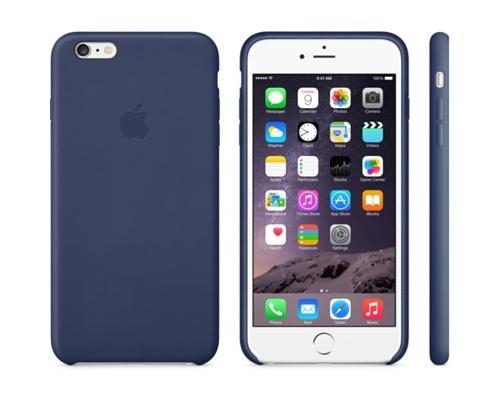Showing posts with label Mobile. Show all posts
Tuesday, 18 November 2014
Opera mobile store to become the default app store on legacy Nokia phones
Opera Software has signed an agreement with Microsoft to become the default mobile app store on the Nokia Symbian feature phones and Nokia X platform devices. From the first quarter of next year, the Nokia Store app will redirect to the Opera Mobile Store for the Nokia Series 40,...
Read moreMicrosoft to shut down Nokia Store for feature phones
As Microsoft continues sloughing off the Nokia brand name on phones, the Nokia Store for feature phones will cease to exist.
Having already dropped the Nokia branding for its latest smartphone -- the Microsoft Lumia 535 -- Microsoft is set to shut down the Nokia Store in the first...
Read moreSamsung to cut smartphone models by up to a third in 2015
Samsung will stop producing so many models of smartphones and focus on a core set of devices in the new year, the company said Tuesday.
Speaking to investors in New York, Samsung's head of investor relations, Robert Yi, said his company plans to cut the number of smartphone models...
Read moreThursday, 6 November 2014
OnePlus has sold 500,000 phones so far, half of them in China
OnePlus has sold just over 500,000 phones since the new Chinese brand hit the market in 16 countries in May. Carl Pei, OnePlus’ co-founder, revealed the number to Forbes and said that the plan is to sell one million by the end of the year.
Pei explained to Tech in Asia via email...
Read moreSunday, 2 November 2014
5 Tough Cases for Your iPhone 6
The iPhone 6 is bigger than ever, meaning you get the benefits of a large screen — an improved display and functionality — but also a greater target to crack if it’s dropped (not to mention its bendable aluminum case). This is why you might want more rugged protection...
Read moreSamsung’s 2 New Phones Are All Metal, All Selfie, All Too Familiar
Oh, hey, is that your iPhone … wait a minute. That’s not an iPhone. That’s a … Samsung?
That’s right; Samsung has just announced two new smartphones that are dead ringers for Apple’s iPhone 5 and 5s. Say hello to the Galaxy A5 and the Galaxy A3, two handsets that Samsung hopes...
Read moreFriday, 24 October 2014
Sony Xperia Z3v: Verizon's PlayStation Phone Reviewed
Most consumers today know Sony for its PlayStation gaming consoles, TVs, movies, and the legendary Walkman. You’d be forgiven, though, if you didn’t know that the Japanese tech giant also offers a line of smartphones. But just one carrier, T-Mobile, currently sells Sony’s handsets....
Read moreSunday, 12 October 2014
Here's How Visa Plans to Keep Your Credit Cards Safe in Apple Pay
Apple is gearing up to launch its first mobile payments system, Apple Pay, which will allow you to make purchases with the iPhone 6 or iPhone 6 Plus by simply tapping your phone.
With the recent JP Morgan breach and Target hack that resulted in millions of stolen credit...
Read moreWednesday, 8 October 2014
We Pick Up Our Smartphones 1,500 Times a Week, Stare at Them 3 Hours a Day
A recent study monitoring the behavior of mobile phone owners shows that the average smartphone owner picks up his device a staggering 1,500 times in a week and spends more than three hours a day staring into its screen.
The numbers come from a survey of 2,000 smartphone owners,...
Read moreFacebook tests mobile payments via Messenger app
According to screenshots that appeared this week, Facebook Messenger is already equipped to handle fast mobile payments with a user's registered card details.
Andrew Aude, a computer science student at Stanford University, discovered the hidden feature using iOS and OS X tool...
Read moreWednesday, 1 October 2014
Half of All Active Phones Are Damaged
Most of us have felt the anguish that goes with breaking a smartphone. Toilets, children, sidewalks, keys, and microwaves are all your enemies. And then you’re stuck with the agonizing decision of whether to live with the cracks and quirks or pay to get a new phone. So I guess...
Read moreSunday, 28 September 2014
Phoning 'home': what your mobile may be giving away
(Reuters) - When popular Chinese handset maker Xiaomi Inc admitted that its devices were sending users' personal information back to a server in China, it prompted howls of protest and an investigation by Taiwan's government.
The affair has also drawn attention to just how little...
Read moreThursday, 25 September 2014
SAMSUNG ALPHA BIG ON DESIGN, SHORT ON TECH
(AP) - Apple filled a gaping hole in its product lineup with new iPhones boasting larger screens like Samsung's flagship Galaxy smartphones. Now, Samsung is coming out with a smaller phone that looks and feels more like an iPhone.
The new iPhones measure 4.7 inches and 5.5 inches...
Read moreApple plays defense on iPhone 6 bending, software concerns
(Reuters) - Apple Inc (AAPL.O) broke its silence on complaints about bending iPhones, hours after withdrawing a glitch-ridden software update as the company struggles to restore momentum to the rollout of its latest phones.
"With normal use, a bend in iPhone is extremely rare...
Read moreWednesday, 24 September 2014
Apple iPhone rollout marred by ‘bendgate,’ dropped cell service
(Reuters) - Two new Apple (AAPL.O) products hit speed bumps on Wednesday: iPhone 6 Plus buyers discovered their phones can bend when placed in back pockets, and the company pulled its latest mobile operating system after reports of dropped cellular service.
"Bendgate," as...
Read more10 Awesome iPhone 6 and 6 Plus Cases
Smartphone cases have gone from a necessary evil that protect your phone from the inevitable bumps and bruises of everyday life to sophisticated fashion statements.
And the newest crop of cases and bumpers for the iPhone 6 and 6 Plus are no different. We’re talking...
Read more
Subscribe to:
Posts
(
Atom
)

































